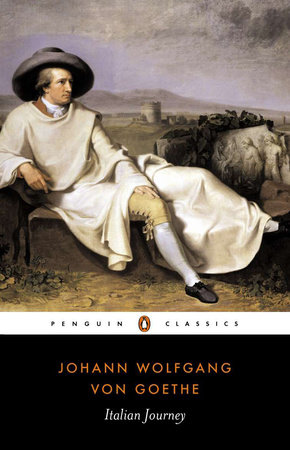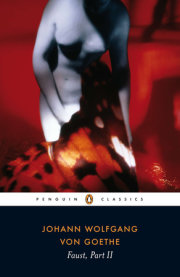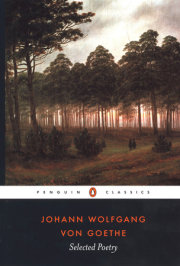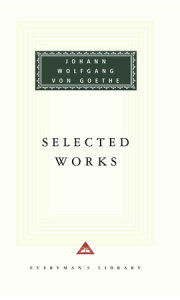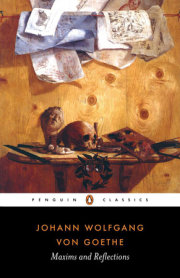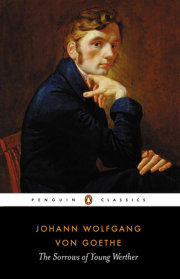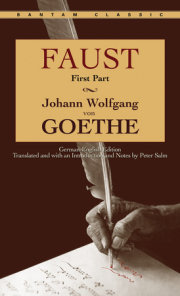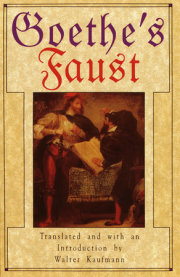Before he was thirty,
Johann Wolfgang von Goethe had proven himself a master of the novel, drama, and lyric poetry. But even more impressive than his versatility was his unwillingness ever to settle into a single style or approach; whenever he used a literary form, he made it something new.
Born in 1749 to a well-to-do family in Frankfurt, he was sent to Strasbourg to earn a law degree. There, he met the poet-philosopher Herder, discovered Shakespeare, and began to write poetry. His play
Götz von Berlichingen (1773) made him famous throughout Germany. He was invited to the court of the Duke of Saxe-Weimar, where he quickly became a cabinet minister. In 1774 his novel of Romantic melancholy,
The Sorrows of a Young Werther, electrified all of Europe. Soon he was at work on the first version of his
Faust, which would finally appear as a fragment in 1790.
In the 1780s, Goethe visited England and immersed himself in classical poetry. The next decade saw the appearance of
Wilhelm Meister’s Apprenticeship, his novel of a young artist's education, and a wealth of poetry and criticism. He returned to the
Faust material around the turn of the century and completed Part 1 in 1808.
The later years of his life were devoted to a bewildering array of pursuits: research in botany and a theory of colors, a novel (
Elective Affinities), the evocative poems of the
West-Eastern Divan, and his great autobiography,
Poetry and Truth. In his eighties he prepared a forty-volume edition of his works; the forty-first volume, published after his death in 1832, was the second part of
Faust.
Goethe’s wide-ranging mind could never be confined to one form or one philosophy. When asked for the theme of his masterwork,
Faust, he could only say, “From heaven through all the world to hell”; his subject was nothing smaller.
View titles by Johann Wolfgang von Goethe





